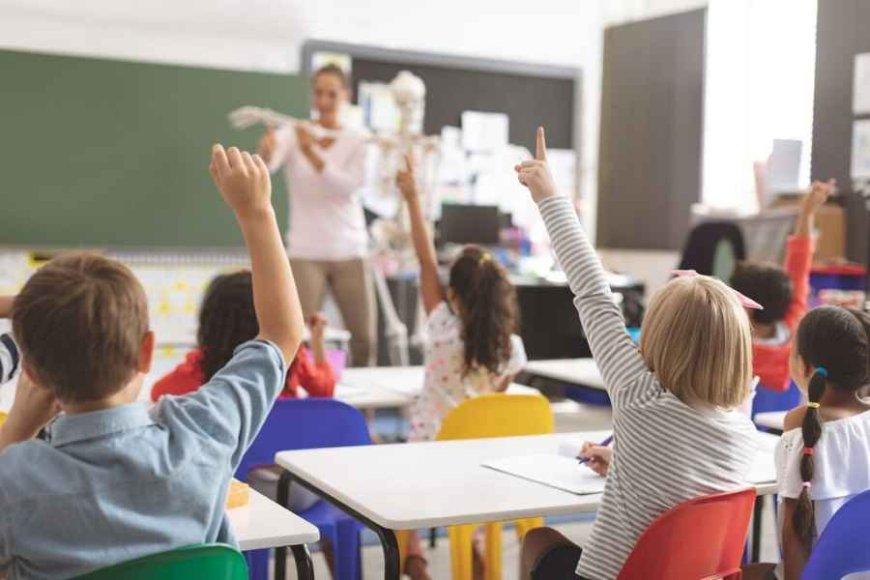Empowering Special Needs Education Essential Tools for Inclusive Learning
This article delves into the world of special needs education tools, exploring how innovative resources are transforming

In the realm of education, inclusivity and individualized support are paramount, especially when catering to the diverse needs of students with varying abilities. This article delves into the world of special needs education tools, exploring how innovative resources are transforming learning environments and nurturing the potential of every student.
Unlocking Potential: Special Needs Education Tools for Inclusion
Inclusive education goes beyond the conventional classroom, aiming to provide equitable learning opportunities for students of all abilities. Special needs education tools play a pivotal role in achieving this goal, offering personalized support, adaptive strategies, and a conducive environment for learners with diverse needs.
Exploring Special Needs Education Tools: Bridging Learning Gaps
Augmentative and Alternative Communication (AAC) Devices:
AAC devices are designed to support students with limited verbal communication abilities. These tools include communication boards, speech-generating devices, and apps that empower students to express themselves effectively.
Text-to-Speech and Speech-to-Text Software:
Challenges with reading and writing are aided by innovative tools that perform text-to-speech and speech-to-text functions for students. These remarkable aids can transform written content into audible speech or verbal communication into written form.
Visual Aids and Communication Symbols:
Visual aids, such as picture schedules, social stories, and communication symbols, help students with autism and other communication disorders understand and navigate daily routines and social interactions.
Adaptive Learning Platforms:
Adaptive learning software tailors educational content to each student's level and pace. These platforms offer customized lessons, practice activities, and assessments to accommodate individual learning needs.
Sensory Integration Tools:
Sensory integration tools, such as fidget toys, noise-canceling headphones, and sensory cushions, create a supportive environment for students with sensory processing challenges.
Personalized Learning Approaches for Special Needs
Individualized Education Plans (IEPs):
IEPs are personalized plans that outline the educational goals, strategies, and accommodations for students with special needs. These plans ensure that each student's unique learning requirements are met.
Differentiated Instruction:
Differentiated instruction tailors teaching methods and content to suit students' diverse learning styles, abilities, and interests. This approach ensures that every student can access and engage with the curriculum.
Universal Design for Learning (UDL):
UDL promotes the creation of learning environments and materials that are accessible to all students, regardless of their abilities. It encourages multiple means of representation, engagement, and expression.
Peer Tutoring and Collaborative Learning:
Peer tutoring and collaborative learning foster social interaction and skill development. Students with special needs benefit from the support of their peers while building academic and social skills.
Creating Inclusive Learning Environments
Accessible Classroom Design:
Classrooms should be physically accessible and designed with consideration for students with mobility challenges. This includes ramps, adjustable furniture, and clear pathways.
Emotional and Behavioral Support:
Providing counseling services, emotional support, and behavior management strategies helps students with special needs cope with challenges and thrive in the learning environment.
Teacher Professional Development:
Educators should receive ongoing training to effectively implement special needs education tools and strategies. This ensures that students receive the highest quality of support.
The Future of Special Needs Education: A Path of Progress
As technology and educational research advance, the landscape of special needs education is evolving. Innovations such as virtual reality simulations for social skill development, personalized AI-driven tutoring, and neurodiversity-informed curriculum design are reshaping the way educators approach inclusive learning.
Special needs education tools pave the way for inclusive, equitable, and empowering learning experiences. By embracing augmentative communication devices, adaptive platforms, individualized approaches, and accessible environments, educators are championing the potential of every student. As the journey continues, these tools stand as testaments to the commitment to providing an education that celebrates diversity, nurtures growth, and fosters success.
